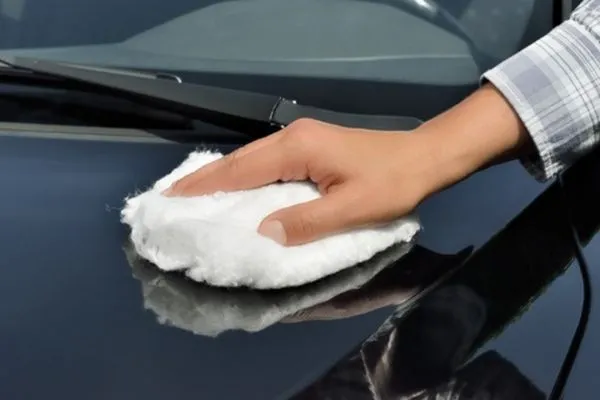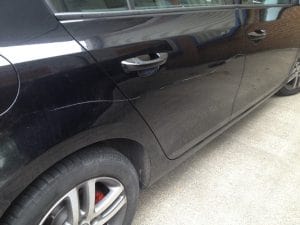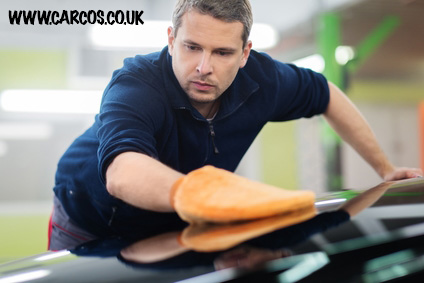In the world of car ownership, few things are as frustrating as discovering a fresh stone chip or scratch on your vehicle’s pristine paintwork. These seemingly minor blemishes can quickly escalate into larger issues, affecting not only the aesthetic appeal of your car but also its resale value and structural integrity. Stone chips and scratches are common problems faced by drivers everywhere, often resulting from everyday road hazards like flying debris or careless parking. But the good news is that with the right knowledge, you can prevent most of them, repair the ones that do occur, and protect your car for the long haul.
This comprehensive guide dives deep into everything you need to know about stone chips and scratches. We’ll explore their causes, effective prevention methods, step-by-step repair techniques (both DIY and professional), recommended products, and ongoing maintenance tips to keep your car looking showroom-fresh. Whether you’re a new driver dealing with your first ding or a seasoned car enthusiast seeking advanced protection strategies, this article is designed to equip you with practical, actionable advice. By the end, you’ll have the tools to tackle stone chips and scratches head-on, saving time, money, and frustration.
Why does this matter? According to industry experts, untreated stone chips can lead to rust and corrosion, especially in regions with harsh weather conditions like rain, salt, or ice. In fact, a single chip exposing bare metal can spread rust within weeks, potentially costing hundreds in repairs. Prevention and timely fixes aren’t just about cosmetics—they’re about preserving your investment. Let’s start by breaking down what stone chips and scratches really are and why they happen.

Understanding Stone Chips and Scratches
Stone chips, also known as rock chips or paint chips, occur when small stones, gravel, or road debris are propelled into your car’s paint at high speeds. These impacts create tiny craters or divots in the clear coat, base coat, or even down to the primer and metal. Scratches, on the other hand, are linear marks caused by abrasive contact, such as keys, branches, or improper washing techniques. While they might seem similar, the key difference lies in their formation: chips are impact-based, while scratches are friction-based.
Both can vary in severity. Surface-level scratches affect only the clear coat and are often buffable, while deeper ones penetrate the color layer or expose metal, inviting rust. Stone chips are particularly insidious because they’re common on the front bumper, hood, and fenders—areas exposed during highway driving. In the UK and similar climates, where roads are often treated with loose chippings or salt, these damages are even more prevalent.
From a material science perspective, modern car paints contribute to the problem. Today’s water-based paints are environmentally friendly but softer than older solvent-based versions, making them more susceptible to chipping. Vehicle designs have evolved too: sleeker aerodynamics can funnel debris directly toward vulnerable spots, and thinner panels (for fuel efficiency) offer less resistance. If you’re driving a premium vehicle like a Jaguar or BMW, unique paint formulations (e.g., metallic or pearlescent) can make repairs trickier due to color-matching challenges.
Statistically, stone chips affect millions of vehicles annually. A survey by automotive repair networks indicates that over 60% of drivers report at least one chip per year, with highway commuters facing higher risks. Scratches are equally common, often from urban parking woes. Understanding these damages is the first step to combating them—knowledge empowers you to spot early signs and act before minor issues become major headaches.
Common Causes of Stone Chips and Scratches
To effectively prevent stone chips and scratches, it’s essential to identify their root causes. The primary culprit for stone chips is road debris. When vehicles ahead kick up loose gravel, sand, or stones—especially on highways or unpaved roads—these particles can travel at speeds matching your own, turning them into tiny projectiles. Construction zones, where fresh asphalt or chip-sealing is applied, exacerbate this, as do rural areas with gravel shoulders.
Weather plays a role too. Rain can loosen road materials, while winter salt treatments corrode paint over time, weakening it against impacts. High-speed driving amplifies the issue; at 70 mph, even a small pebble can cause significant damage. For scratches, common causes include contact with sharp objects like shopping carts, tree branches, or even your own keys in a pocket. Improper car washing—using dirty sponges or automatic car washes with harsh brushes—is another frequent offender, creating swirl marks or fine scratches.
Other factors include parking habits. Tight urban spaces increase the risk of door dings from adjacent vehicles, while off-road adventures expose cars to bushes and rocks. Even bird droppings or tree sap, if left untreated, can etch into the paint, mimicking scratches. In coastal areas, salt air accelerates degradation, making paint more brittle.
Modern vehicle trends contribute as well. Electric cars with lower ground clearance might pick up more debris, and larger SUVs have bigger front surfaces prone to chips. By recognising these causes, you can adjust your driving and maintenance routines to minimise exposure. For instance, maintaining a safe following distance on highways reduces the “spray” from trucks, which often carry loose loads.

Prevention Strategies for Stone Chips and Scratches
Prevention is always better than cure, especially when it comes to stone chips and scratches. Implementing a multi-layered approach can drastically reduce occurrences, combining protective products, driving techniques, and routine care.
Start with protective coatings. Paint Protection Film (PPF) is one of the most effective options—a clear, urethane-based film applied to high-impact areas like the hood, bumper, and mirrors. It absorbs shocks from stones, often self-healing minor scratches with heat. Professional installation costs £500-£2,000 but lasts 5-10 years, making it ideal for frequent highway drivers. Ceramic coatings offer another layer: a liquid polymer that bonds to the paint, creating a hydrophobic, hardened surface resistant to chips and scratches. Applied professionally for £300-£800, it repels dirt and UV rays, lasting 2-5 years.
Vinyl wrapping provides full-body protection, acting as a sacrificial layer. It’s customisable and costs £1,500-£3,000 for a complete job. For budget-friendly options, regular waxing with carnauba-based products creates a slick barrier, while synthetic sealants applied quarterly enhance durability.
Driving habits matter immensely. Maintain a four-second following distance, especially behind heavy vehicles like trucks that disperse more debris. Avoid tailgating on gravel roads and reduce speed in rain or after roadworks. Choose routes wisely—opt for well-paved A-roads over chip-sealed motorways when possible. In construction zones, adhere to speed limits to minimise flying stones.
Accessories can help too. Mud flaps or splash guards deflect debris from wheels, while stone guards (plastic strips on the hood) protect the windshield and front edge. Car bras, though less common now, offer temporary front-end coverage for long trips. For scratches, park in well-lit, spacious areas away from high-traffic spots, and use door edge guards for added protection.
Routine maintenance is key. Wash your car bi-weekly with pH-neutral soap and microfiber cloths to prevent abrasive buildup. Avoid automatic washes with brushes; opt for touchless or hand washing. Inspect vulnerable areas quarterly in good light, addressing any early stone chips and scratches promptly. In winter, rinse off salt residue frequently to prevent corrosion.
Combining these strategies—products like PPF or ceramic, smart driving, and consistent care—can cut stone chips and scratches by up to 80%, according to automotive protection specialists. It’s an investment that pays off in preserved value and peace of mind.

DIY Repair Methods for Stone Chips and Scratches
If prevention fails, DIY repairs can handle minor stone chips and scratches effectively, saving you a trip to the shop. The key is preparation, patience, and the right tools. Always work in a shaded, dry area with temperatures between 15-25°C for best results.
First, gather supplies: car shampoo, microfiber cloths, isopropyl alcohol, 2000-3000 grit sandpaper, touch-up paint matched to your car’s color code (found on the VIN plate or via your dealer), primer (if needed), clear coat, polishing compound, applicator sticks, masking tape, and gloves.
- Step 1: Clean the area thoroughly with soap and water, then degrease with alcohol. This ensures adhesion and prevents contaminants from ruining the repair.
- Step 2: Assess the damage. If it’s surface-level (clear coat only), a simple polish might suffice. For deeper chips exposing primer or metal, proceed carefully.
- Step 3: If rust is present (common in damp climates), apply a rust converter, let it react, and remove residue. Dry completely.
- Step 4: Prime if bare metal is exposed. Apply thin layers, let dry, and lightly sand if the surface is raised.
- Step 5: Apply touch-up paint using a toothpick or fine brush for precision. Build thin layers, drying 20 minutes between each. Aim to fill slightly above the surface, then let cure for 24 hours.
- Step 6: Add clear coat over the paint, extending slightly beyond the chip. Dry for 24-48 hours, applying a second layer if needed.
- Step 7: Wet-sand any proud areas with fine grit paper, then polish with compound and buff to blend.
For scratches, use a similar process but focus on sanding raised edges first with cutting compound like T-Cut. Apply paint in thin layers along the scratch line.
Tips for success: For metallic paints, apply at the right angle to match shimmer. If the chip is larger than 5mm, consider professional help to avoid visible mismatches. Temporary fixes like clear nail polish can seal chips until proper repair. DIY kits cost £10-£80 and are great for small jobs, but practice on scrap first.
With practice, DIY repairs can yield near-invisible results, especially on non-visible areas. However, if you’re unsure, pros ensure longevity.
Professional Repair Options for Stone Chips and Scratches.
For extensive or visible stone chips and scratches, professional repairs offer superior results, using advanced tools and expertise. When to go pro? If the damage exposes metal, shows rust, involves multiple chips, or is on premium paints—DIY risks worsening it.
SMART (Small to Medium Area Repair Technology) is a popular method, repairing chips under 10mm by filling, painting, and blending without full panel resprays. It’s quick (1-2 hours) and costs £60-£150 per chip. Mobile services bring this to your door for £80-£200.
Full panel resprays handle larger areas, costing hundreds but ensuring seamless matches. Professionals use compressed air for blending metallic paints, something hard to replicate at home.
Costs vary: Basic chip fixes start at £50, while comprehensive jobs with PPF addition can reach £500+. Factors include vehicle type, paint complexity, and location—urban shops charge more.
Choose reputable providers with warranties (e.g., 5 years on repairs). They often include inspections and advice on prevention. In essence, pros save time and deliver durable, value-preserving fixes.

Best Products and Tools for Protection and Repair
Selecting the right products elevates your defense against stone chips and scratches. For protection, top PPF brands like XPEL or 3M offer self-healing films with UV resistance. Ceramic coatings from Gtechniq or Ceramic Pro provide glossy, durable shields.
For DIY repairs, Langka or Dr. ColorChip kits include matched paint and blending solutions for £20-£50. Touch-up pens from automakers ensure exact colors.
Tools: Microfiber towels from Chemical Guys prevent scratches during washing. Polishing compounds like Meguiar’s Ultimate Compound buff out minor marks.
Sealants like Collinite 845 wax offer affordable protection. Invest in quality—cheap products can fail prematurely.
Maintenance Tips to Avoid Future Damage
Ongoing care is crucial. Wash regularly with two-bucket methods to avoid swirls. Wax quarterly for a protective layer. Inspect monthly, sealing new chips immediately. Use garage parking to dodge environmental hazards. These habits extend your car’s life and minimise stone chips and scratches repairs.
Frequently Asked Questions About Stone Chips and Scratches
What causes stone chips and scratches on cars?
Road debris like gravel hits at high speeds, common on highways.
How can I prevent stone chips and scratches?
Use PPF, maintain distance, and wax regularly.
Is DIY repair worth it?
For minor chips, yes—but pros for big jobs.
How much does professional repair cost?
£60-£200 per chip, depending on extent.
What’s the best protection product?
PPF for ultimate shield, ceramic for ease. Other than that maintain good coverage of wax on your car.
Can stone chips and scratches cause rust?
Yes, if they expose metal—repair promptly.
How often should I wax my car?
Every 3 months for optimal protection. Read this post on protecting your car.
Are automatic car washes safe?
Touchless yes, brush ones no—they cause scratches.
Conclusion
Stone chips and scratches don’t have to ruin your driving experience. With prevention, timely repairs, and smart maintenance, you can keep your car flawless. Start implementing these tips today for lasting protection.
Mobile Car Body Repairs
At Car Cosmetics, we specialise in mobile car body repairs, bringing expert solutions for stone chips and scratches directly to your doorstep. Our skilled technicians use advanced SMART repair techniques to fix minor dings, chips, and scratches with precision, restoring your vehicle’s flawless finish without the need for costly full-panel resprays. Whether it’s a small rock chip on your hood or a key scratch on your door, we deliver fast, affordable, and high-quality repairs, saving you time and hassle. Car Cosmetics combines convenience with professional-grade results, ensuring your car looks showroom-ready wherever you are. Contact us today for a free quote and keep your vehicle protected!
Legal Stuff
Car Cosmetics (www.carcos.co.uk) proudly complies with all relevant UK regulations, ensuring our stone chips and scratches services meet the highest standards of consumer protection, data privacy, and industry compliance. We strictly adhere to the General Data Protection Regulation (GDPR), UK consumer rights laws, and automotive industry standards to provide safe, reliable, and transparent services. Our commitment to legal and ethical practices underpins every aspect of our operations, from customer interactions to data handling.
To maintain transparency, we provide detailed Terms and Conditions and a Privacy Policy on our website, which outline your rights, our responsibilities, and how we safeguard your personal information. These documents are designed to give you confidence in our processes and commitment to compliance. We encourage all customers and visitors to review these policies to fully understand our obligations and the protections in place for you. By choosing Car Cosmetics, you’re partnering with a business dedicated to delivering exceptional, compliant car cosmetic solutions tailored to your needs. Visit www.carcos.co.uk to explore our services, learn more about our policies, and see how we prioritise your trust and satisfaction in every interaction.

